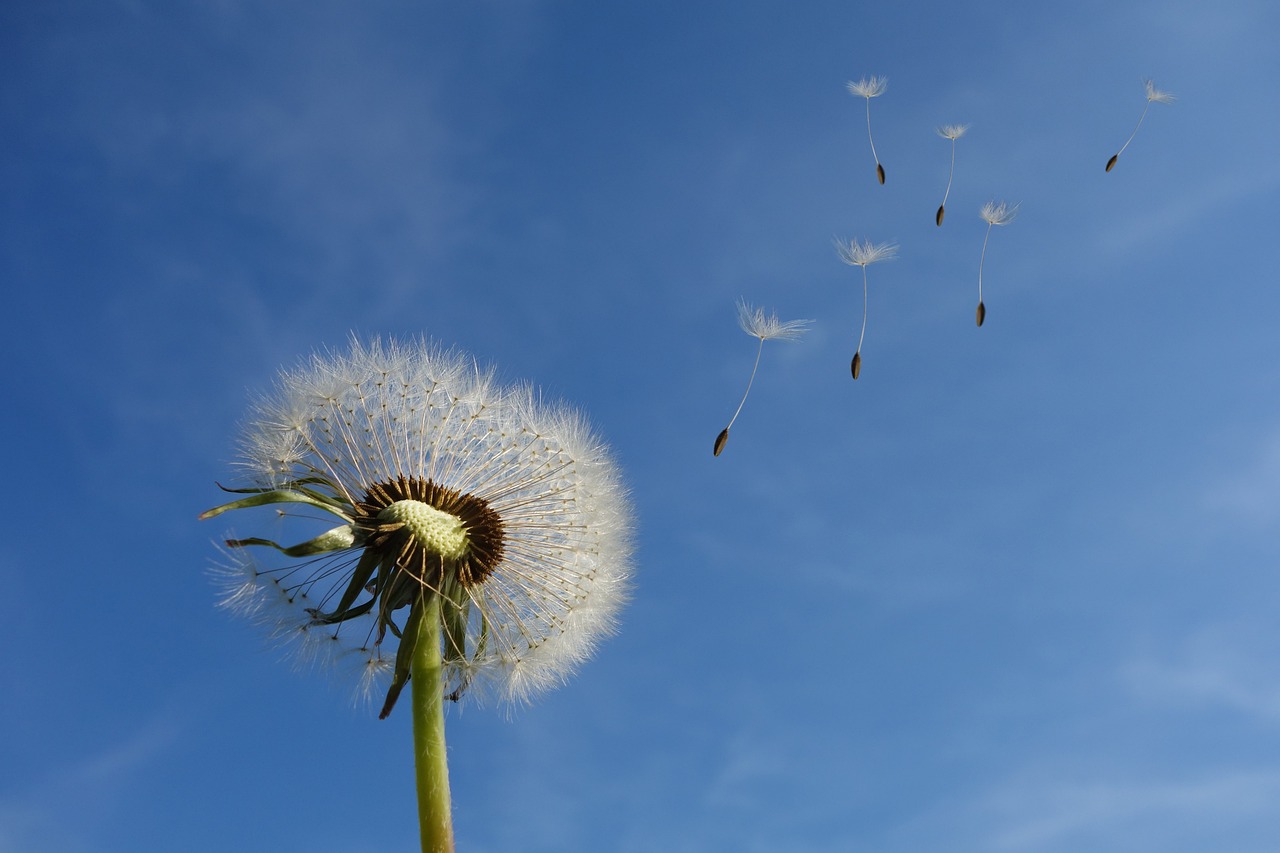Dandelion
Overview
The Taraxacum officinale, or dandelion, is a versatile perennial found worldwide. Revered for its culinary and medicinal uses, it’s easily grown in full sun and diverse soil conditions. This resilient herb serves various benefits, from making dandelion wine to supporting blood sugar control, and also enriches soil for other plants.

Characteristics
Known for its bright yellow flowers, medicinal properties, culinary uses, and resilient, invasive nature.
Region
It is found worldwide in diverse habitats ranging from fields to urban areas.
Natural Habitat
Fields, meadows, lawns, and disturbed areas in various habitats worldwide.
Cultivation
Prefers full sunlight, minimal watering, and well-drained soil with pH 5.5 to 7.5.
Uses and Benefits
The dandelion (Taraxacum officinale) touts numerous culinary and medicinal benefits that can be tapped into right from your garden. For those of you bringing this dynamic herb into your kitchen and wellness routine, here’s what to look forward to:
- Culinary Delights: Every part of the dandelion is edible. The leaves serve as a nutritious addition to salads, roots can be brewed into a robust “dandelion coffee,” and the blossoms are the key ingredient for a unique homemade dandelion wine6.
- Medicinal Marvel: Packed with vitamins and minerals, dandelions have been traditionally used to support blood sugar management, diminish inflammation, and encourage healthy digestion7.
- Companion Planting: Garden-wise, dandelions can improve soil conditions for nearby plants with their deep-reaching roots, which help to aerate the earth and facilitate nutrient uptake10.
Despite their usefulness, it’s important to manage their growth to prevent them from becoming overly invasive in your garden11.

Cultivation Tips
Cultivating Taraxacum officinale, commonly known as dandelion, is simple and quite rewarding, given their variety of uses. Here are some straightforward tips to ensure your dandelions flourish:
- Location: Choose a spot that receives plenty of sunlight. Full sun exposure is ideal for dandelions to thrive.
- Soil: Plant dandelions in well-drained soil. They aren’t fussy about pH levels and can grow in both acidic and alkaline environments.
- Sowing: Directly sow seeds in your garden during early spring. This ensures they establish themselves before the heat of summer.
- Spacing: Keep plants about 4-6 inches apart, allowing them enough room to grow.
- Watering: Although they are drought-tolerant, regular watering will promote better growth, especially during dry periods.
Remember, while dandelions can be a delightful addition to your garden, due to their invasive nature, it’s crucial to manage them carefully to prevent them from overtaking other plants. Their resilience and adaptability make them both a joy and a challenge for gardeners8 11.
Seasonal Considerations
The seasonal considerations for the Taraxacum officinale or dandelion herb are crucial to ensure a successful growth cycle:
- In the spring, dandelions are most vigorous. This is the best time to harvest leaves and flowers for culinary uses and health remedies as their growth peaks9.
- During the summer, they tend to enter a state of dormancy. It’s an adaptive response to survive the heat and dry conditions. However, the plant will still be alive, just not as active9.
- When fall comes around, dandelions become active again, making it another ideal time for harvest. The cooler weather encourages growth and rejuvenation9.
- In winter, they can survive harsher conditions by going dormant once more. This is when the plant conserves energy and awaits the return of warmer weather to restart its cycle9.
Understanding these seasonal changes helps in planning the planting and harvesting of dandelions, ensuring that you can effectively cultivate and utilize them throughout the year.

Issues and Troubleshooting
Dandelions (Taraxacum officinale) can be delightful in a garden but also pose challenges.
Common Issues: They may become invasive. Their prolific seed production and rapid growth mean they can quickly overrun gardens. This can overshadow other plants or lead to a monoculture.
Troubleshooting: Regular monitoring of your garden can help keep dandelion growth in check. If they begin to spread, consider timely weeding or the use of a root digging tool to remove the deep taproot. Mulching can also suppress unwanted seedlings. Remember, with proper control, dandelions can be a nutritious and medicinal part of your home garden.
History and Folklore
The history of the dandelion, or Taraxacum officinale, intertwines with centuries of folklore. Traditionally revered for their medicinal properties, dandelions have been a symbol of healing across cultures. The resilience of this plant has led people to also see it as a symbol of survival and persistence. It’s suggested that the very sight of their sunny yellow flowers was thought to cheer the spirit.
This historical perspective reflects a time when plants were closely linked to human life, often representing deeper meanings and significances rooted in survival and daily needs 12.
References
1. “Taraxacum officinale”. ITIS Standard Report Page: Taraxacum officinale. Integrated Taxonomic Information System.
2. “Dandelion”. Invasive Species Compendium. CABI.
3. “Dandelion”. Plant Finder. Missouri Botanical Garden.
4. “Soil pH for Vegetables”. Cornell University, College of Agriculture and Life Sciences, Home Gardening.
5. “Drought Plants: Dandelion”. University of California, Agriculture and Natural Resources.
6. “Dandelion Greens”. Specialty Produce.
7. “Dandelion”. National Center for Complementary and Integrative Health, U.S. Department of Health & Human Services.
8. “Growing Dandelions”. Gardening Know How.
9. “Dandelion”. Penn State Extension.
10. “Companion Planting”. Cornell University, College of Agriculture and Life Sciences, Home Gardening.
11. “Dandelion”. University of California Statewide Integrated Pest Management Program.
12. “The History of Dandelions”. The Green Pharmacy.
Image Credit: blickpixel
Image Credit: AdinaVoicu
Image Credit: simonfritzfotografie
Nicolas Duval
Nicolas is a passionate advocate for nature and the art of wildcrafting. His dedication shines through in Wildcraftia, a website he meticulously crafted to serve as a haven for nature enthusiasts worldwide. Driven by a deep appreciation for nature’s connection to humanity, Nicolas embarked on his journey in 2011 with SmokableHerbs, a platform showcasing his love for nature’s bounty. Building upon this foundation, he established Smokably, a thriving online store offering premium herbs and blends to a global audience.
